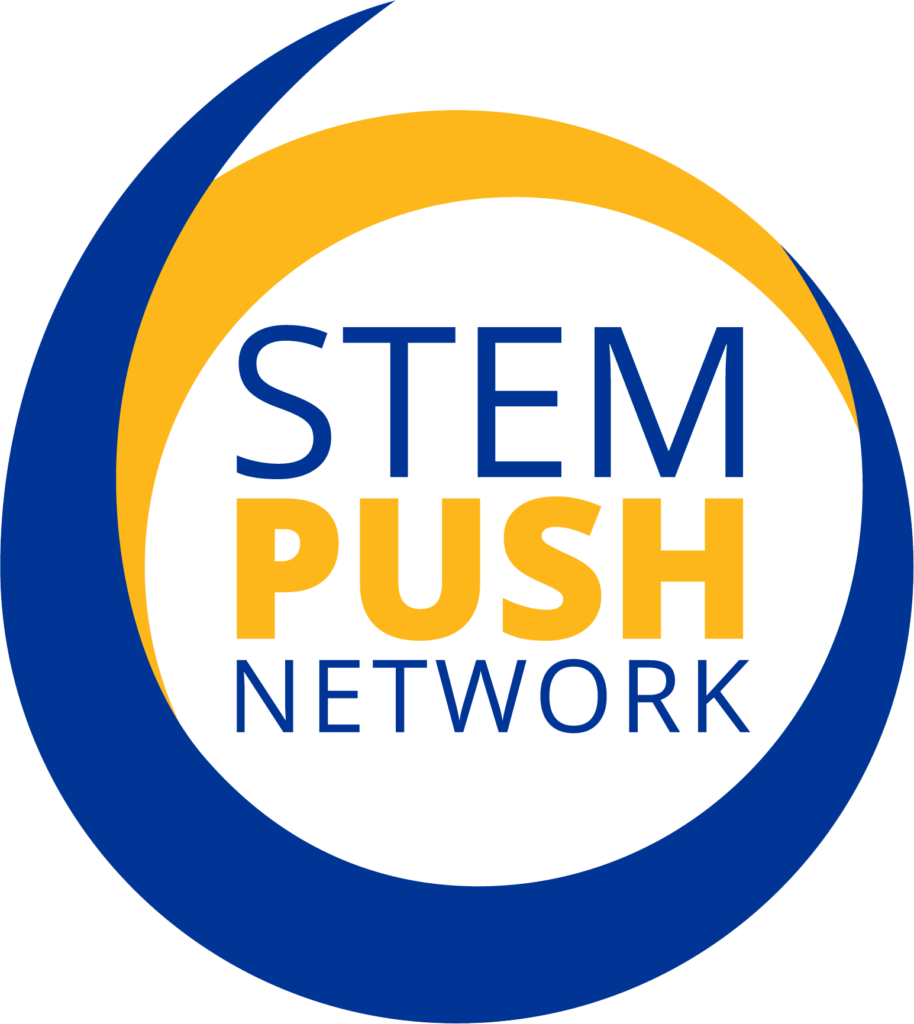STEM PUSH is Working to Increase Numbers of Black and Brown Students Pursuing STEM
The idea started as all good ones do — from a big problem: Too few People of Color are pursuing STEM disciplines and professions.
The explanations for why are varied and complex and range from systemic racism to institutional complacency.
Through their affiliations with colleges, universities and various programs that serve People of Color, leaders of the STEM PUSH (Pathways for Underrepresented Students to Higher Ed) Network had first-hand understandings of how difficult it can be for Black and Brown students to gain admission to post-secondary STEM programs and then to persist in them even after acceptance.
An Idea to Action
The leaders of the STEM PUSH Network, an NSF INCLUDES Alliance, began taking their ideas and shaping them into an action plan in 2018.
In broad terms, the NSF INCLUDES Alliance is a cooperative agreement between the National Science Foundation and the University of Pittsburgh with the STEM Learning Ecosystems Community of Practice serving as the backbone.
More specifically, the STEM PUSH Network has taken shape as a national network of STEM equity experts, operators of middle and high school STEM programs and college accreditation and admissions professionals.
STEM PUSH seeks to increase awareness and adoption of equity-based and culturally sustaining practices within pre-college STEM programs.
A ‘Next Generation’ Accreditation Model
The STEM PUSH Network is establishing a powerful collaborative improvement space using the networked improvement community (NIC) model and a “next generation” accreditation model that will serve as a mechanism for communicating the power of pre-college programs to admissions offices.
Currently, there are 17 pre-college STEM programs located within four urban STEM ecosystems with the goal of reaching 40-45 PCSPs within 10 urban ecosystems by 2024.
The STEM PUSH Network’s initial cohort includes program and ecosystem partners in New York City, Pittsburgh, Chicago, and the Bay Area. These partners are currently engaged in improvement cycles in which they are testing high leverage ideas for increasing the number of Black and Brown students who enroll and persist in STEM undergraduate study.
Programs are beginning to test two potentially powerful interventions: 1) A discussion routine that supports program staff engaging with a podcast episode highlighting racism in STEM; and 2) reflections that support students in identifying what they bring to their programs, articulating the skills they are developing, and linking those to qualities of STEM professionals.
Soon, they will be working on building a framework to engage and activate program alumni in support of younger program participants. Together these partners are positioned to reform post-secondary admissions through an accreditation system to communicate the value of PCSPs to admissions officers, and the infrastructure to study the effects of PCSPs on admissions, persistence, attainment, and transition to the workforce.
A Plan for Expansion
The expansion plan for the STEM PUSH Network is rooted in the STEM Learning Ecosystem Community of Practice (SLECoP) model. We are identifying five additional urban ecosystems during the project, based on factors that consider the number of PCSPs, university partners and enthusiasm to expand the work.
The new cohort of Ecosystems will be onboarded in June, with the new PCSP cohort joining the NIC in Fall 2021.
Other updates and general information about STEM PUSH:
- STEM PUSH is advised by a world-class council of experts from the NIC, HigherED, Informal Science Learning and STEM fields.
- We’re getting noticed and gaining traction. The STEM PUSH Network has grown its reach through some key activities, including a webinar for NSF, Engaging Stakeholder Voices, and a blog about effective communications with an accompanying communications guide.
- The STEM PUSH Network successfully completed a “Reverse Site Visit” with a team of NSF evaluators, affirming that its work is on-track. The STEM PUSH team is implementing some recommendations from the expert panel and is encouraged by the external validation and input.
- The NIC members are starting to test a few different change ideas related to racism in STEM, STEM identity/sense of belonging and designing an alumni network.
- STEM PUSH designed, piloted, and implemented a self-study tool for PCSPs that was based on our Quality Standards for broadening participation in STEM.
- The STEM PUSH Network is working with the Middle States Association to design the “next generation” accreditation model for PCSPs.
- STEM PUSH is forming an Admissions-specific Advisory Council to engage admissions professionals to help form the admissions strategy for the Network.
Why should Ecosystem leaders know about and care about the work of STEM PUSH?
As a leader of a STEM Learning Ecosystem, you and your colleagues are working to improve STEM learning opportunities for all. Many STEM Ecosystem leaders working in K-12 spaces or out-of-school settings are doing great work engaging students, providing them with rich experiences and launching them on what we hope will be a long and rewarding career strengthened, guided, and ideally, directly linked to their STEM exposure. The sad reality is that many colleges and universities don’t recognize the work of pre-college STEM programs – immersive STEM experiences that give students hands-on experiences in STEM – in their application process.
The dual epidemics of Coronavirus and systemic racism have created a unique opportunity for STEM PUSH to make a real difference in enrolling more minoritized students in STEM fields.
The STEM PUSH Network seeks to give pre-college STEM programs greater currency in the admissions process. So, we are working as part of the same chain as you with direct alignment to your goals of increasing STEM opportunities for all.
What general advice can you offer to Ecosystem leaders or others who also want to work for reforms in STEM college admissions?
Get to know your college admissions officers. Begin conversations with them about STEM programs that they offer and the process they use for recruiting and evaluating prospective students.
Here’s a checklist of some top questions you may want to ask:
- How many STEM-focused programs do they offer?
- What is the demographic make-up of those STEM programs – both in enrolled students as well as faculty?
- Where and how are you recruiting for those majors?
- What factors go into the decision-making process for admission?
- Are pre-college STEM-focused experiences given any consideration?
- Are you interested in learning more about pre-college STEM programs and talking with others who are working to give them greater currency in the college admissions process?
- Read about some of the work of the STEM PUSH Network.
Follow us on social media!
Twitter: @STEMPUSHNetwork
Facebook: facebook.com/STEMPUSH
LinkedIn: linkedin.com/company/stem-push-network

